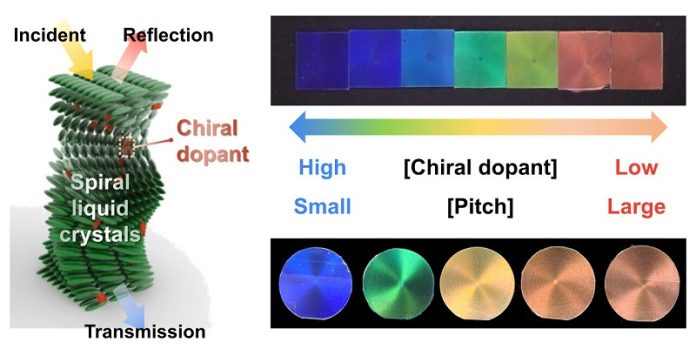
Researchers at the Nanophotonics Research Center at the Korea Institute of Science and Technology (KIST), led by Dr. Jin Gu Kang, have developed an innovative material that could make cooling during hot summer days much more efficient—and it doesn’t even require electricity.
This new material is a colorful liquid crystal that not only cools by radiating heat but also adds a splash of color to whatever it’s applied to.
Their groundbreaking work was recently published in the Chemical Engineering Journal.
Radiative cooling is a technology that cools surfaces by releasing heat as infrared radiation.
This heat escapes through what scientists call the “atmospheric window”—a part of the Earth’s atmosphere that allows heat to be released into space.
Because this process doesn’t rely on external power, it’s seen as a promising eco-friendly alternative to traditional air conditioning, which consumes a lot of energy.
Most radiative cooling materials developed so far are white, which is excellent for reflecting sunlight and enhancing cooling. However, this white color isn’t always suitable for buildings, cars, or other objects where aesthetics are important.
Imagine wanting to keep your home cool but not being thrilled about covering it in bright white paint. That’s where the challenge lies—creating a material that cools effectively but also comes in a range of colors.
In the past, researchers tried to make colored radiative cooling materials. However, these materials either absorbed too much light, which reduced their cooling ability, or they could only produce dull colors.
Dr. Kang’s team found a way around this by using a special type of liquid crystal known as LC242. This material can form what are called “photonic crystals,” which reflect light to create color rather than absorb it. When the liquid crystals are aligned into a spiral shape using a special technique, they produce vibrant colors and still maintain excellent cooling properties.
To enhance the material further, the researchers used a process called spin coating to bend the liquid crystals, which resulted in even more vivid and consistent colors.
Then, by layering this colorful material between a transparent film on top and a thin metallic film on the bottom, they created a coating that can cool surfaces by up to 30.8°C more than standard colored paint and 3.1°C below the temperature of the surrounding air at the hottest part of the day.
This new material could be a game-changer for reducing air conditioning costs, especially in places where aesthetics matter, like the exteriors of buildings and cars. It could also be used in other areas where electricity isn’t available, such as outdoor gear or military tents.
Dr. Kang is hopeful that, with further development, this material could be produced on a large scale at a low cost, making it accessible for widespread use. “If large-scale commercialization of this technology is successful,” he said, “it could be used for cooling in a wide range of fields, from electronics to mobility.”
This colorful, power-free cooling solution could make our hot summers a little cooler—both in temperature and in style.



